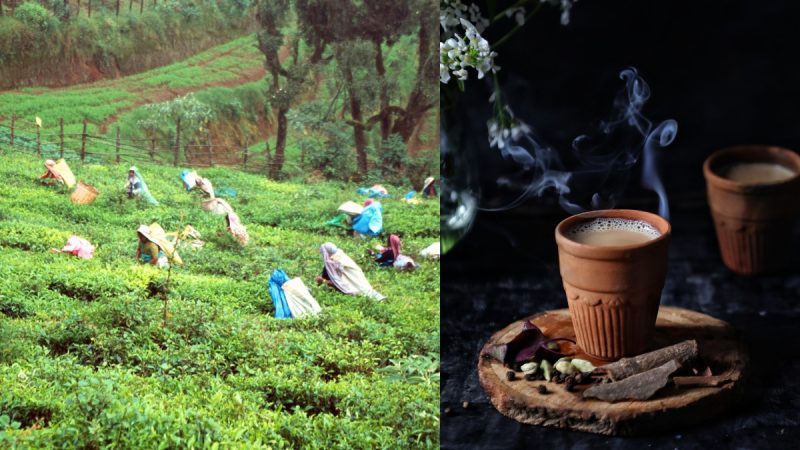In the verdant landscapes of India lies a tapestry woven with the flavours of tradition, terroir, and tantalising aromas. From the rolling plains of Assam to the mist-covered hills of Darjeeling, each region paints its own portrait on the canvas of tea culture, offering a journey of discovery for enthusiasts and connoisseurs alike. Discover the chai destinations of India, where every cup tells a tale of heritage, craftsmanship, and the magic of nature’s bounty.
Chai Destinations In India
1. Assam
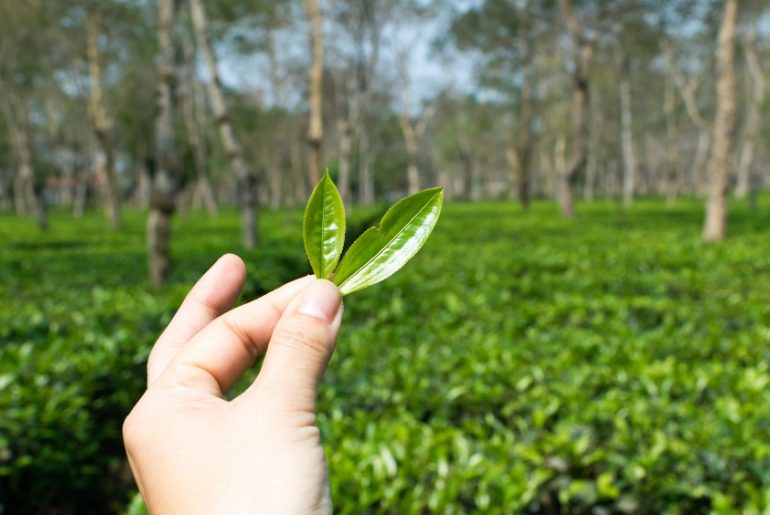
Assam, nestled along the rolling plains by the Brahmaputra River, boasts the title of the largest contiguous tea-growing area globally. What makes Assam tea truly exceptional is its robust, malty flavour, attributed to the region’s rich loamy soil, unique climate, and ample rainfall. With its deep-amber colour and brisk, strong character, Assam tea offers a perfect morning wake-up call. The distinctive second-flush orthodox Assam teas are renowned for their rich taste and bright liquors. It is cherished globally, solidifying Assam’s position as a tea powerhouse.
2. Darjeeling, West Bengal
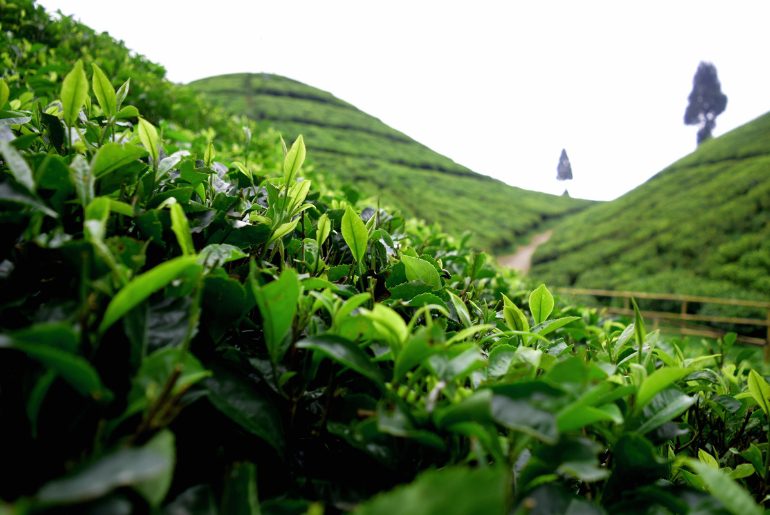
West Bengal, the second-largest tea-growing state in India, holds a special place with its unique Darjeeling tea. It is often hailed as the Champagne of teas. Darjeeling’s tea industry not only contributes significantly to the state’s economy but also encapsulates the essence of exclusivity and rarity. With its annual crop of about 10 million kg, Darjeeling tea accounts for a small yet prestigious fraction of India’s total tea production.
The region’s elevation ranges from 600 to 2000 metres above sea level. It imparts a distinctive pale lemon to rich amber colour to its brew. Darjeeling tea’s complex flavour profile, characterised by its mellow, smooth, and brisk attributes, offers a sensory journey like no other. Beyond its taste, Darjeeling tea also embodies relaxation and mystique, making it a cherished indulgence worldwide.
3. Nilgiri Hills, Tamil Nadu

Nestled amidst the picturesque Nilgiri Hills, Tamil Nadu’s tea gardens produce the fragrant Nilgiri tea. It is celebrated for its delicate floral notes and golden-yellow liquor. The region’s elevation, ranging from 1000 to 2500 metres above sea level, combined with an annual rainfall of 150 to 230cm, creates the perfect environment for tea cultivation.
Nilgiri tea, both Orthodox and CTC varieties, showcases a crisply brisk and bright flavour profile, complemented by lingering notes of dusk flowers. The balanced blend of flavour and body also makes Nilgiri tea a favourite among blenders. It is known to offer a truly flavoured respite for stressful days. Unlike its counterparts, tea production in Nilgiri remains consistent throughout the year, thanks to the region’s dual monsoon influence.
Also Read: From Ropeway To Bollywood-Themed, Here Are 5 Unique Restaurants In Surat To Visit
4. Tripura

Tripura’s tea story is one of indigenous enterprises, with tea cultivation dating back to 1916, solely driven by Indian entrepreneurs. Mainly producing CTC tea, Tripura’s agro-climatic conditions are characterised by fertile soil and uniform rainfall. It certainly provides an ideal setting for tea cultivation. While Tripura’s tea industry may not boast the fame of its counterparts, its significance as the state’s second-largest organised industry after rubber cannot be understated. With its unique history and locally driven cultivation, Tripura’s tea certainly adds a distinctive flavour to India’s diverse tea landscape.
5. Kangra Valley, Himachal Pradesh
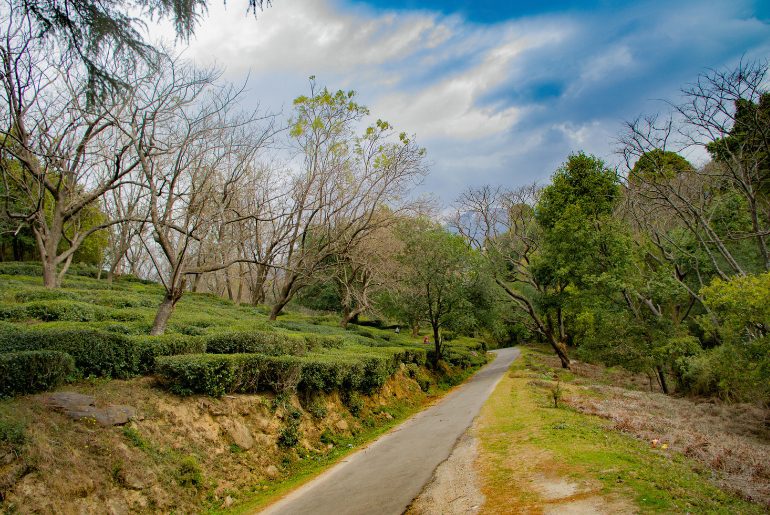
In the breathtaking Kangra Valley of Himachal Pradesh lies the majestic Dhauladhar mountain range, the backdrop to the region’s prized Kangra tea. Crafted from the region’s characteristic terrain, soil conditions, and cool mountain climate, Kangra tea offers a delightfully distinct cup of quality. Whether it’s the sweet lingering aftertaste of black tea or the delicate woody aroma of green tea, Kangra’s teas capture the essence of the Valley of Gods. As one of India’s smallest tea regions, Kangra’s exclusivity also adds to the allure of its tea.
6. Sikkim
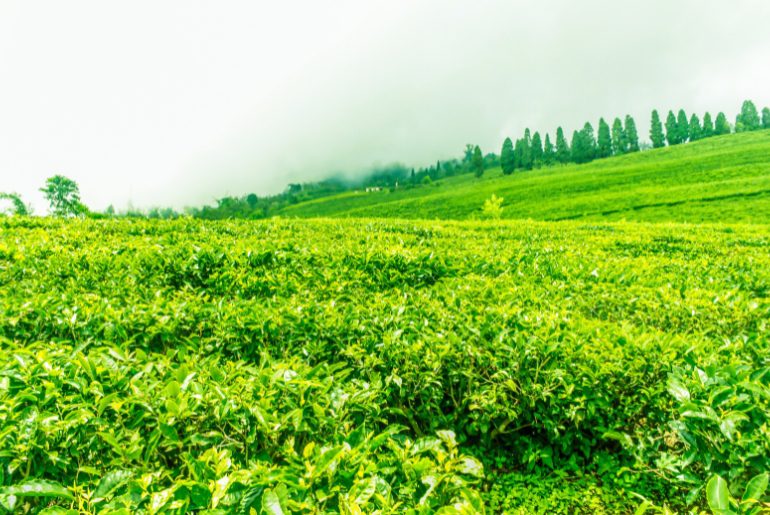
Sikkim, nestled in the Himalayas, boasts organic tea gardens producing exquisite brews renowned for their light, flowery flavour and delicate aroma. With elevations ranging from 1000 to 2000 metres above sea level, Sikkim’s tea leaves thrive in a pristine environment. They are also hand-plucked with care to preserve their quality. From the first flush’s unique taste and aroma to the third flush’s full-bodied cup, Sikkim’s teas offer a journey through the season. With varieties ranging from black to white and oolong, Sikkim’s teas cater to diverse palates. It has also gained popularity both locally and internationally as a symbol of purity and taste.
India’s chai destinations promise a sip of serenity amidst the chaos of everyday life!
Cover Image Courtesy: Canva





